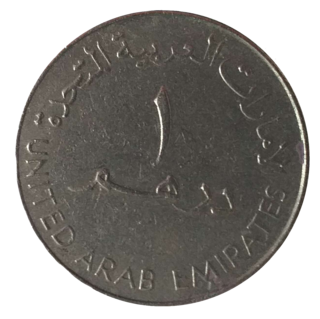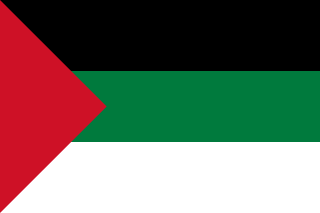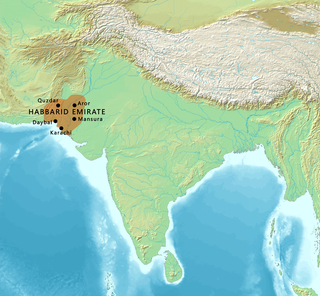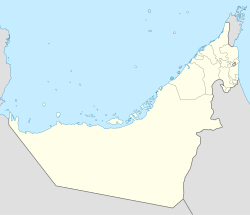
The Umayyad Caliphate or Umayyad Empire was the second caliphate established after the death of the Islamic prophet Muhammad and was ruled by the Umayyad dynasty. Uthman ibn Affan, the third of the Rashidun caliphs, was also a member of the clan. The family established dynastic, hereditary rule with Mu'awiya I, the long-time governor of Greater Syria, who became caliph after the end of the First Fitna in 661. After Mu'awiya's death in 680, conflicts over the succession resulted in the Second Fitna, and power eventually fell to Marwan I, from another branch of the clan. Syria remained the Umayyads' main power base thereafter, with Damascus as their capital.

Abū Jaʿfar ʿAbd Allāh ibn Muḥammad al-Manṣūr usually known simply as by his laqab al-Manṣūr (المنصور) was the second Abbasid caliph, reigning from 136 AH to 158 AH succeeding his brother al-Saffah. He is known for founding the 'Round City' of Madinat al-Salam, which was to become the core of imperial Baghdad.

Abu al-Abbas Abd Allah ibn Muhammad ibn Ali ibn Abd Allah, known by his laqab al-Saffah, was the first caliph of the Abbasid Caliphate, one of the longest and most important caliphates in Islamic history.

Abū ʿAbd Allāh Muḥammad ibn ʿAbd Allāh al-Manṣūr, better known by his regnal name al-Mahdī, was the third Abbasid Caliph who reigned from 775 to his death in 785. He succeeded his father, al-Mansur.

The Arab Emirates Dirham (; Arabic: درهم إماراتي, abbreviation: د.إ in Arabic, Dh and Dhs or DH in Latin; ISO code: AED is the official currency of the United Arab Emirates. The dirham is subdivided into 100 fils . It is pegged to the United States Dollar at a constant exchange rate of approximately 3.67 AED to 1 USD.

A caliphate or khilāfah is an institution or public office under the leadership of an Islamic steward with the title of caliph, a person considered a political-religious successor to the Islamic prophet Muhammad and a leader of the entire Muslim world (ummah). Historically, the caliphates were polities based on Islam which developed into multi-ethnic trans-national empires. During the medieval period, three major caliphates succeeded each other: the Rashidun Caliphate (632–661), the Umayyad Caliphate (661–750), and the Abbasid Caliphate (750–1517). In the fourth major caliphate, the Ottoman Caliphate, the rulers of the Ottoman Empire claimed caliphal authority from 1517 until the caliphate was formally abolished as part of the 1924 secularisation of Turkey. Throughout the history of Islam, a few other Muslim states, almost all of which were hereditary monarchies such as the Mamluk Sultanate (Cairo) and Ayyubid Caliphate, have claimed to be caliphates.

The Pan-Arab colors are black, white, green and red. Individually, each of the four Pan-Arab colors were intended to represent a certain aspect of the Arabs and their history.
The modern Islamic gold dinar is a projected bullion gold coin, so far not issued as official currency by any national state. It aims to revive the historical gold dinar, which was a leading coin of early Islam. The currency might consist of minted gold coins (dinars) or of silver coins (dirhams).
Bayt al-mal is an Arabic term that is translated as "House of money" or "House of wealth." Historically, it was a financial institution responsible for the administration of taxes in Islamic states, particularly in the early Islamic Caliphate. It served as a royal treasury for the caliphs and sultans, managing personal finances and government expenditures. Further, it administered distributions of zakat revenues for public works. Modern Islamic economists deem the institutional framework appropriate for contemporary Islamic societies.

The Rashidun Caliphate was the first caliphate to succeed the Islamic prophet Muhammad. It was ruled by the first four successive caliphs of Muhammad after his death in 632 CE. During its existence, the empire was the most powerful economic, cultural, and military force in West Asia and Northeast Africa.

The flag of the Arab Revolt, also known as the flag of Hejaz, was a flag used by Hussein bin Ali and his allies, the Arab nationalists, during the Arab Revolt against the Ottoman Empire during World War I, and as the first flag of the Kingdom of Hejaz. It was designed by Mark Sykes but is highly reminiscent of previous Arab flags, such as the flags of the al-Muntada al-Adabi, al-ʽAhd and al-Fatat.

The gold dinar is an Islamic medieval gold coin first issued in AH 77 (696–697 CE) by Caliph Abd al-Malik ibn Marwan. The weight of the dinar is 1 mithqal.

There was an Abbasid–Carolingian alliance during the 8th and 9th centuries, effected through a series of embassies, rapprochements and combined military operations between the Frankish Carolingian Empire and the Abbasid Caliphate.

The Habbari were an Arab dynasty that ruled much of Greater Sindh, as a semi-independent emirate from 854 to 1024. Beginning with the rule of 'Umar bin Abdul Aziz al-Habbari in 854 CE, the region became semi-independent from the Abbasid Caliphate in 861, while continuing to nominally pledge allegiance to the Abbasid Caliph in Baghdad. The Habbari ascension marked the end of a period of direct rule of Sindh by the Umayyad and Abbasid Caliphates, which had begun in 711 CE.

The Abbasid Revolution, also called the Movement of the Men of the Black Raiment, was the overthrow of the Umayyad Caliphate, the second of the four major Caliphates in Islamic history, by the third, the Abbasid Caliphate. Coming to power three decades after the death of the Islamic prophet Muhammad and immediately after the Rashidun Caliphate, the Umayyads were an Arab empire ruling over a population which was overwhelmingly non-Arab. Non-Arabs were treated as second-class citizens regardless of whether or not they converted to Islam, and this discontent cutting across faiths and ethnicities ultimately led to the Umayyads' overthrow. The Abbasid family claimed descent from al-Abbas, an uncle of Muhammad.

The Abbasid invasion of Asia Minor in 782 was one of the largest operations launched by the Abbasid Caliphate against the Byzantine Empire. The invasion was launched as a display of Abbasid military might in the aftermath of a series of Byzantine successes. Commanded by the Abbasid heir-apparent, the future Harun al-Rashid, the Abbasid army reached as far as Chrysopolis, across the Bosporus from the Byzantine capital, Constantinople, while secondary forces raided western Asia Minor and defeated the Byzantine forces there. As Harun did not intend to assault Constantinople and lacked ships to do so, he turned back.

Arab rule in Georgia, natively known as Araboba refers to the period in the History of Georgia when all or part of the country was under political domination of Muslim Arab rulers, from the first Arab incursions in the mid-7th century until the final defeat of the Emirate of Tbilisi at the hands of King David IV in 1122. Compared with other regions which endured Muslim conquests, Georgia's culture, and even political structure was not much affected by the Arab presence, as the people kept their faith, the nobles their fiefdoms, and the foreign rulers mostly insisted on the payment of tribute, which they could not always enforce. Still, repeated invasions and military campaigns by the Arabs devastated Georgia on many occasions, and the Caliphs retained suzerainty over large parts of the country and exerted influence over the internal power dynamics during most of the period.
The haras was a personal bodyguard unit of the caliphs during the Umayyads and the Abbasids. The haras was also instituted in the Emirate of Córdoba in contemporary Spain.
In 633 CE, the Arab invasion of Iran began, and finally in 654 CE it would lead to the fall of the Sassanid Empire and Iran would come under the rule of the Rashidun, Umayyad and Abbasid caliphs.

Emirate of Multan was a medieval Muslim kingdom in Punjab that was centred around city of Multan, present-day part of Punjab, Pakistan. It was initially ruled by the tribe of Banu Munabbih. In 959 CE, Ismaili Qarmatians under Banu Lawi gained control of the Emirate and in 1010, it was conquered by Ghaznavid Empire.
















